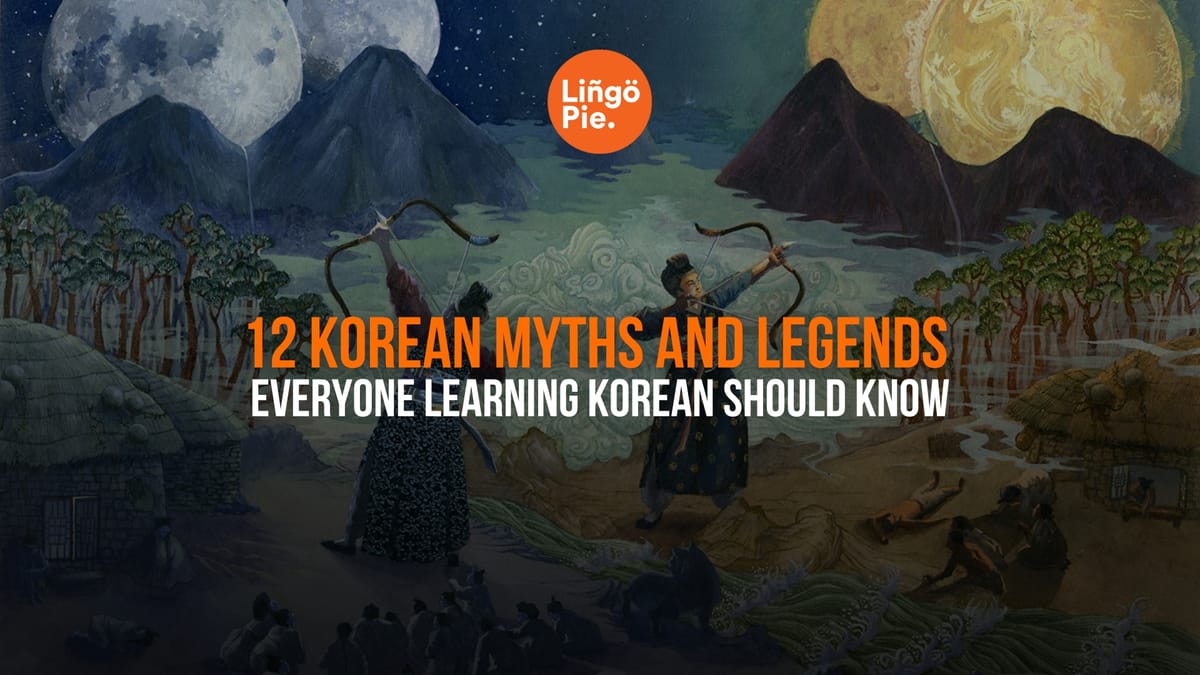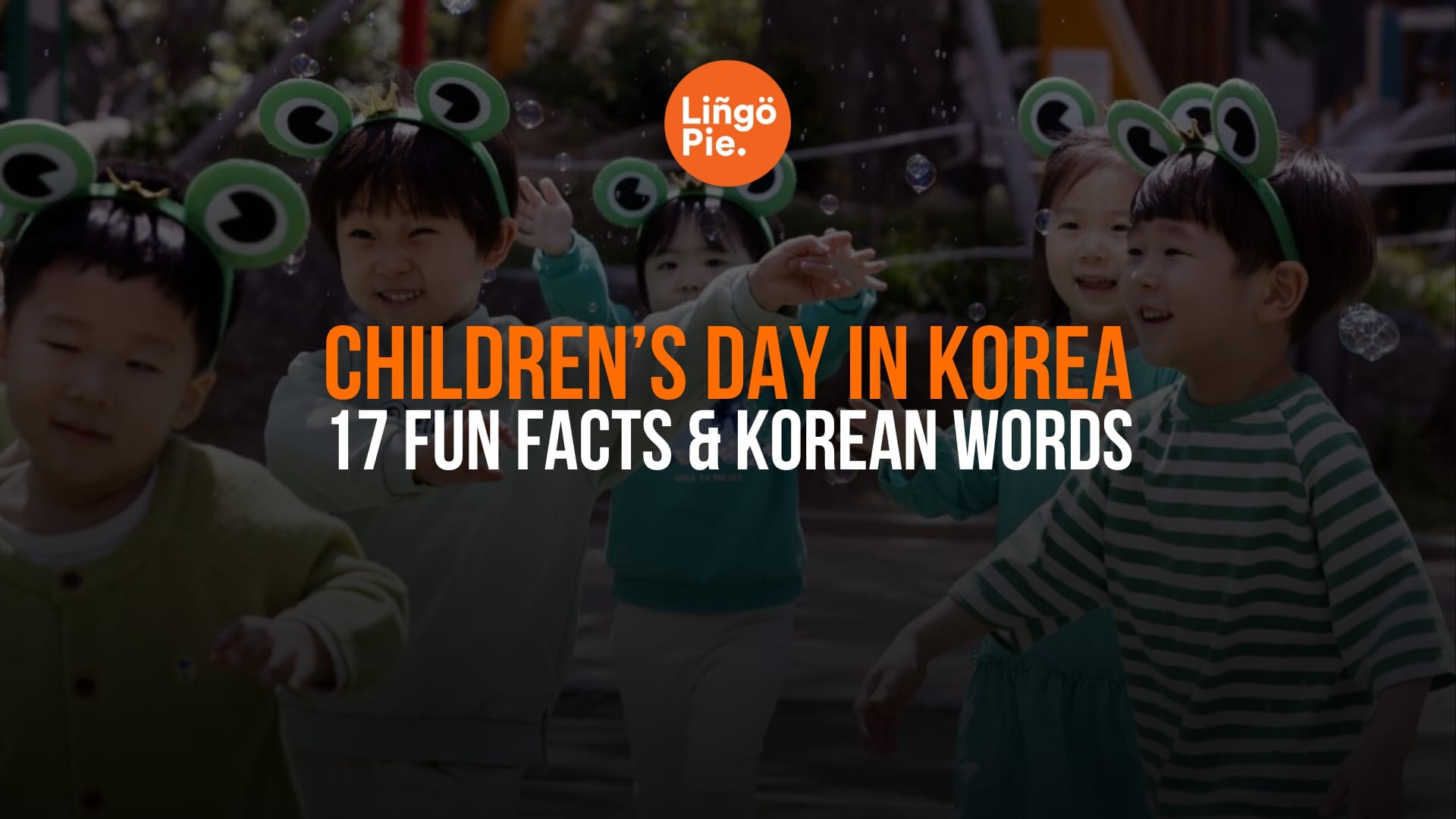When you start learning Korean, knowing the stories behind the culture gives you a huge advantage. You’ll suddenly catch all those references in K-dramas that used to confuse you. You'll understand why characters get nervous when they see a nine-tailed fox, or why certain symbols keep showing up in shows.
These stories aren’t just from the past. They’re still very much alive in today's Korean culture, showing up in popular Netflix shows and everyday talks. Ready to explore Korea’s magical side? Let’s jump in!
- 7 Phrases To Ask How Are You In Korean With Answers
- 6 Best FREE Korean Learning Websites For Beginners
- How to Learn the Korean Alphabet: Learn the Hangul Fast

What Is Korean Mythology?
Korean mythology refers to all the stories, monsters, and heroes from different parts of Korea. What makes these myths special is how they blend purely Korean ideas with elements from ancient belief systems like Shamanism and later religious influences from Buddhism, Taoism, and Confucianism.
Some mythological stories explain natural events or how the first Korean kingdoms started, while others are about magical creatures and heroes. These myths are still super important in Korea today and appear in Korean dramas, movies, and everyday Korean sayings!
Popular Korean Mythological Creatures
구미호 (Gumiho) - Nine-tailed Fox
A gumiho is a fox with nine tails that can turn into a beautiful woman. In old stories, this fox lived for 1,000 years and would lure men to eat their livers! But there’s hope! If a gumiho can avoid eating humans for 1,000 days, it can become fully human.
You'll spot gumihos in tons of Korean dramas! The most famous ones are “My Girlfriend is a Gumiho” by Shin Min-a and "Tale of the Nine-Tailed” by Lee Dong-wook. When Koreans call someone “fox-like” (여우같은), they’re usually talking about someone cunning.
불 개 (Bulgae) - Fire Dogs
Bulgae are fire dogs from the dark kingdom called Gamangnara. These supernatural pups are the reason we have eclipses! The story goes that their king sent them to catch the sun and moon, but each was either too hot or too cold to grab. The king kept sending more dogs, causing eclipses whenever they tried to snatch the sun or moon.
These fire dogs don't show up much in modern media, but they're part of traditional stories explaining natural events. The name combines "불" (fire) and "개" (dog) – an easy word for Korean beginners to remember!
도깨비 (Dokkaebi) - Korean Goblin

Dokkaebi are Korean goblins created when blood touches an object. Unlike scary Western monsters, these guys can be both tricksters and helpers. They carry a magic club that can summon anything and love challenging humans to wrestling matches.
The mega-hit drama "Guardian: The Lonely and Great God" (or just "Goblin") starring the famous Korean actor Gong Yoo made dokkaebi super popular worldwide. In the show, the dokkaebi is an immortal being looking for his bride to end his eternal life. This drama helped introduce Korean mythology to international audiences in a big way!
천리마 (Chollima) - Thousand-mile Horse

The chollima is a super-fast winged horse that could run about 400 kilometers in just one day! According to legend, this amazing horse wanted someone to tame it, but when nobody could, it flew up into the sky.
While not featured much in dramas, the chollima is an important cultural symbol. In South Korea, you'll find it in sports team names, while North Korea uses it to represent speed and development. Koreans might say someone runs "천리마처럼" (like a chollima) if they're really fast!
저승사자 (Jeosung Saja) - Korean Grim Reaper

The Korean Grim Reaper guides dead souls to the afterlife. Traditionally wearing a black hanbok (Korean traditional clothes), modern TV shows now often show them in stylish black suits with cool fedoras.
Lee Dong-wook played a handsome but troubled Grim Reaper in "Goblin," making this character super popular. Other dramas like "Hotel Del Luna" and "Arang: the Magistrate" also feature these death messengers. If someone tells you that you look "like a jeosung saja," they're probably saying you look pale or seriously tired!
불가사리 (Bulgasari) - Metal-eating Chimera
The bulgasari is a weird monster whose name means "can't be killed" or "only killable by fire." It has a bear's body, elephant's trunk, rhino's eyes, cow's tail, and tiger's legs! This creature eats metal and grows bigger with each bite.
This monster was featured in a 1962 South Korean film and pops up occasionally in other Korean media. While not as famous as other creatures on this list, it's part of Korea's rich monster mythology.
봉황 (Bonghwang) - Korean Phoenix

The bonghwang isn't your typical phoenix. It's actually a mix of many animals, with parts from a rooster, swallow, snake, goose, turtle, deer, and fish all in one creature! It rules over all birds and stands for good luck and prosperity.
While the bonghwang doesn't show up in many modern dramas, you’ll see it everywhere in Korean royal symbols and historical Korean shows. Today, it appears on the South Korean presidential seal and is decorated with many palaces. When you visit Korea, keep an eye out for this mythical bird in traditional art and architecture!
삼족오 (Samjoko) - Three-legged Crow
This weird three-legged crow was super important during the Goguryeo Dynasty as people thought it was even more powerful than dragons! Its three legs represent morning, noon, and evening, and it was believed to live in the sun.
The samjoko mostly appears in historical dramas set in ancient Korea. It doesn't show up in modern K-dramas much, but knowing about it will help you understand references in historical shows and some modern designs that borrow from ancient Korean symbols.
해태 (Haechi) - A Dog With A Lion Head
The haechi looks like a lion-dog mix with a horn on its head and scales on its body. It can tell right from wrong and punish bad people with its horn. It's also believed to prevent fires and natural disasters.
Since 2009, the hamachi has been Seoul's official symbol! You'll see haechi statues all over the city, especially at historical sites like Gwanghwamun. In modern Korean culture, the hamachi represents both protection and justice.
귀신 (Gwisin) - Ghosts
Korean ghosts are different from Western ones. They're almost always women with long black hair, white funeral clothes, and a scary stare. More importantly, they're usually people who died with "unfinished business" and can't move on until they solve their problems.
Today, K-dramas and horror stories love adding horrifying ghosts! Shows like "The Master's Sun," "A Korean Odyssey," and "Hotel Del Luna" all feature these spirits. In the Korean language, native speakers also use this word in the phrase “귀신같이” (like a ghost) to describe someone super skilled!
이무기 (Imugi) - Korean Dragons
Korean dragons aren’t fire-breathers. Instead, they’re water creatures that bring rain and good harvests. Most dragons start as imugi, giant snake-like beings that live in water or caves.
To become a full dragon, an imugi must live for 1,000 years or catch a magic ball called yeouiju (여의주). The 2020 drama "Tale of the Nine-tailed" featured an imugi as a villain. Koreans use the phrase "용이 되다" (to become a dragon) to describe someone who succeeds after a long struggle, just like an imugi becoming a dragon!
달토끼 (Daltokki) - Moon Rabbit
When Koreans look at the moon, they see a rabbit making rice cakes! According to the myth, this rabbit (daltokki) lives on the moon, pounding rice to make rice cakes (떡 - tteok) with a mortar and pestle. Today, the rabbit symbolises purity, long life, and self-sacrifice.
Unlike other Korean mythological creatures, the moon rabbit is popular as a cute character in children’s stories, animated films, products, and advertisements. During Chuseok, moon rabbit decorations and rabbit-shaped rice cakes are also popular.
Why These Myths Help Your Korean Learning
Knowing these myths helps you:
- Get K-drama references without needing explanations
- Understand Korean expressions rooted in these legends
- Connect with Korean speakers on a deeper level
- Spot mythical symbols in Korean art and buildings
- Learn about Korean values through these stories
Next time you watch a K-drama and hear someone mention a gumiho or dokkaebi, you'll know exactly what they're talking about!
Watch Korean Myths Come Alive With Lingopie
Want to see these myths in action? Try Lingopie! It’s a cool language learning resource that lets you watch authentic Korean TV shows with clickable subtitles. Many K-dramas on Lingopie feature these exact mythical creatures we’ve talked about!
When you watch shows with gumihos or dokkaebi on Lingopie, you can instantly click any Korean word to see what it means. The app even makes flashcards from words you click, so you'll remember terms like "구미호" (gumiho) or "도깨비" (dokkaebi) easily.
With thousands of hours of Korean content, Lingopie makes learning through mythology fun and effective – you'll improve your Korean while seeing these ancient myths come to life on screen! Curious? Give Lingopie a try now!







![11+ Best Shows On Netflix To Learn Korean [2025]](/blog/content/images/size/w300/2025/05/Best-Shows-On-Netflix-To-Learn-Korean.jpg)

